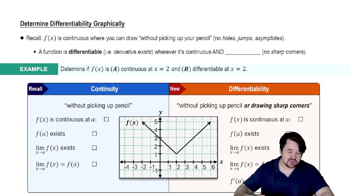Areas of regions Find the area of the region bounded by the graph of ƒ and the 𝓍-axis on the given interval.
ƒ(𝓍) = 𝓍³ ― 1 on [―1, 2]
 Verified step by step guidance
Verified step by step guidance Verified video answer for a similar problem:
Verified video answer for a similar problem:



 5:23m
5:23mMaster Finding Area Between Curves on a Given Interval with a bite sized video explanation from Patrick
Start learning